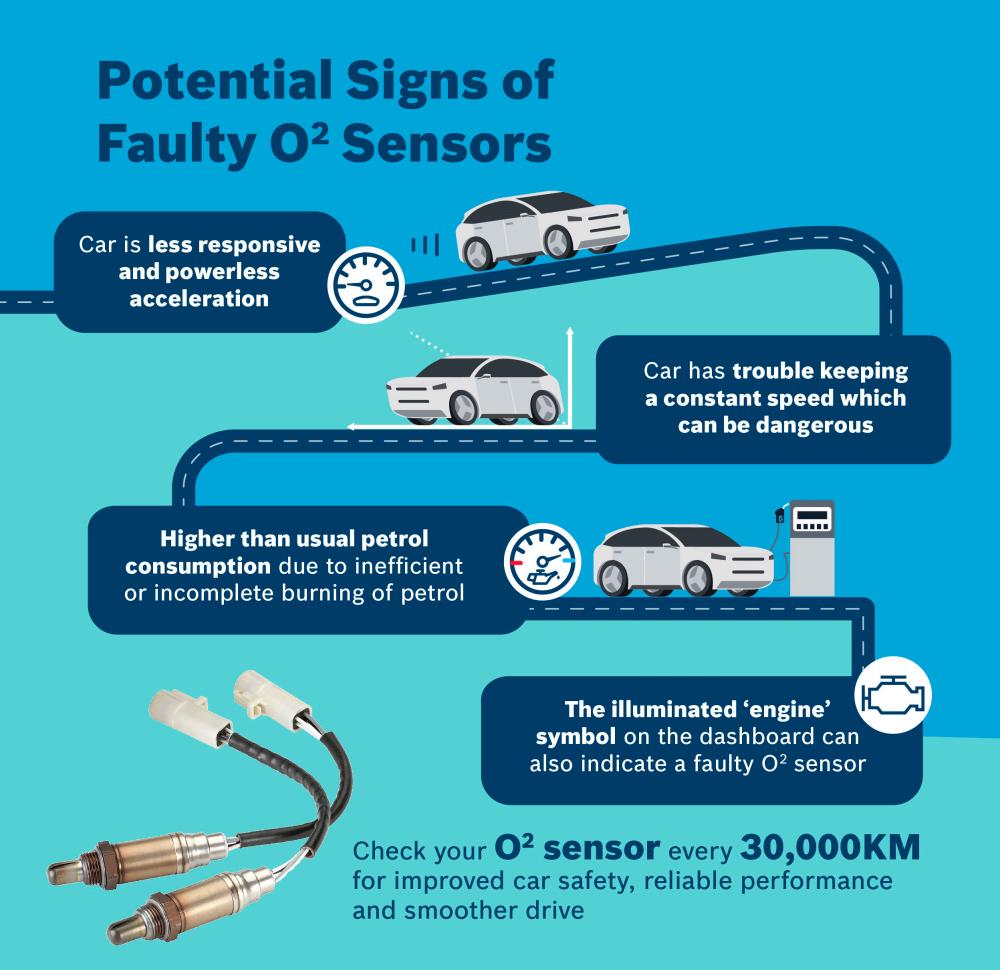YOUR car needs to breathe properly for it to drive smoothly and this does not involve only the air filter.
German multinational engineering and technology company Robert Bosch GmbH, commonly known as just “Bosch”, pioneered the development of a small but powerful car part called the Lambda sensor, that does exactly that for our cars.
That sensor is commonly known as an oxygen (O2) sensor, which all modern cars produced in the last 20 to 25 years enjoy its benefits.
The O2 sensor is designed to monitor the air flow through the car exhaust system. It reads the oxygen content in exhaust system, which then sends a signal back to the engine control unit (ECU), the “brain” of the car.
The signal from the O2 sensor is key to ensure the car consumes the right amount of oxygen levels to burn fuel efficiently, drive smoother and prevent the over-consumption of petrol.
A faulty O2 sensor can be the first step to reduced car performance. That not only means wasted fuel, but increases car emissions, further releasing more carbon dioxide (CO2) which contributes greenhouse gas emissions to the environment.
Bosch Automotive Aftermarket Malaysia (Bosch AA) says that since O2 sensors are an unseen car part, most drivers are not aware of its existence.
Hence, there is a lack of awareness on its important function in car safety and ensuring how reliably the car runs.
The potential signs of faulty O2 sensors are:
- Your car is less responsive or experiences powerless acceleration.
- This means that when stepping on the accelerator pedal, drivers may encounter revving of the car without any acceleration or movement.
- Your car has trouble keeping constant speed. These can both contribute to accidents if the car is unable to accelerate at crucial moments.
- Higher than usual petrol consumption due to inefficient or incomplete burning of petrol.
A faulty O2 sensor can be alerted through the “engine” symbol on the dashboard.
This will not always relate to the O2 sensor, but still offers an indication that something is wrong with the engine.
When noticing these signs, Bosch AA strongly recommends drivers to have a mechanic perform maintenance check on the O2 sensors, as it may need replacing.
In worst-case scenarios, it can accelerate damage to the catalytic converter, an important part of the exhaust system, which can be expensive to replace or repair.
Check the sensor every 30,000km
Since the O2 sensor is a durable car part which safeguards the performance of your car, it is worthwhile to check that it is working.
As a rule of thumb, Bosch AA highly recommends a check on the O2 sensor done every 30,000km.
Bosch AA offers two types of O2 sensors.
The Bosch Original series offers options that are vehicle specific, while the Bosch Universal range provides a universal option that fits most vehicles.









